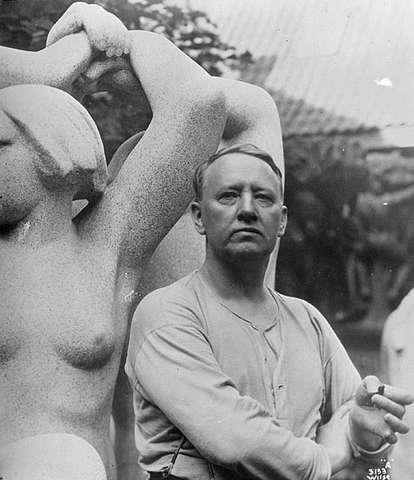
In pursuing his ambitions to be a sculptor, Vigeland traveled to Copenhagen, Berlin, Paris, and Florence to hone his skills, find inspiration, and rub elbows with other artists. To pay the bills once he returned to Norway, Vigeland accepted a commission for sculpture decoration of the Nidaros Cathedral in Trondheim. In total, he created about 44 sculptures for that project.
With this commission behind him, Vigeland would move on to the next defining phase of his career in Oslo. He began work on designing sculptures that would be placed in various spots around the city. However, a dispute with the city would alter those plans and lead Vigeland to arrange with the city a place to work and live, in exchange for all his works to be donated to the city of Oslo. With this arrangement in place, Vigeland devoted the next twenty years to planning and creating the open exhibition of his works. Today it is known as Vigelandsanlegget in Frogner Park.
The park features 212 bronze and granite sculptures, which all symbolize every aspect of human life from birth to death. Perhaps the most well-known sculpture in the park is the Monolith, that intertwines 121 human figures reaching up toward heaven. While the collection took twenty years to complete, Vigeland never got to see the finished park by the time he died in 1943. It wasn’t until four years later that the sculpture park and museum was ready and opened to the public, where it remains a testament to the life and legacy of Gustav Vigeland.

